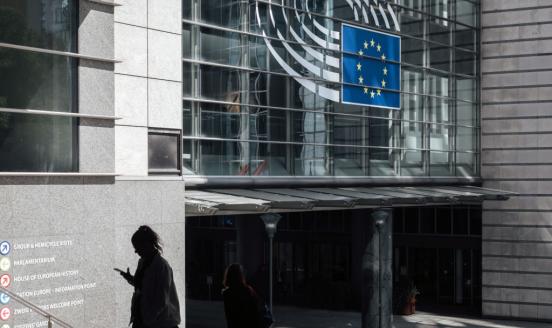New EU insolvency rules could underpin business rescue in the COVID-19 aftermath
Corporate bankruptcies are set to rise in the context of COVID-19. EU countries should speed up adoption of recent insolvency reforms.

One of the less-remarked consequences of the COVID-19 crisis, the associated lockdowns and the unprecedented collapse in demand experienced by some companies, has been a dramatic fall in business defaults and insolvencies. In a normal year, just under 200,000 insolvency proceedings are initiated in Europe, based on private sector figures (there are inherent problems in comparing national notifications). But with the onset of the COVID-19 recession, EU countries suspended regular insolvency law enforcement (an end-2020 European Commission survey showed the extent of this). Meanwhile, fiscal measures, including furlough schemes and tax deferrals, and credit support schemes, including loan moratoria and publicly-guaranteed credit, seem to have been effective in buffering the shock to corporate liquidity.
Suspensions of insolvency enforcement were initially justified. Widespread insolvencies would have resulted in labour market chaos, while loan defaults would have brought collateral to markets at fire-sale prices. But ultimately insolvency rules will again apply with full force in all EU countries. A pickup in insolvency filings by companies that are either illiquid or insolvent based on existing legal definitions seems inevitable, meaning courts will be faced with a backlog of cases. But if EU countries can move more quickly to implement a 2019 EU directive that introduced some insolvency reforms, the outcomes might be more efficient than would have been the case only a few years ago.
Priorities in corporate restructuring
The purpose of insolvency proceedings is to coordinate between competing creditor interests and either impose a reorganisation, in which creditors loose part of their claims and the company emerges largely intact, or a liquidation of the company. On the whole, European insolvency regimes have been biased towards liquidation, rather than restructuring of still-viable enterprises. Proceedings have tended to be lengthy and costly, yielding hard-to-predict outcomes. A November 2020 European Banking Authority (EBA) survey underlined the costs and time required, and the limited recovery values in liquidation.
The EBA estimates are based on data up to the end of 2018 – a time of relatively strong growth. This means the estimates are unlikely to be a good guide to the coming years, when insolvencies will spike. Experience from Chapter 11 proceedings in the US suggests that bankruptcy proceedings are more costly if the ability of courts to restructure firms is constrained. Moreover, such cases are more likely to end in the liquidation, rather than reorganisation, even if the enterprise is in principle viable on the basis of a financial restructuring.
‘Forum shopping’ after Brexit
In the recovery from the COVID-19 crisis, solutions to insolvency negotiated by lenders and enterprises out-of-court, or with limited involvement of the courts, will become particularly important. In 2019, the EU adopted a directive on preventive restructuring (EU 2019/1023) – which now looks like particularly fortuitous timing. The deadline for the directive’s transposition is July 2021, though all but three member states have requested an extension of this deadline. As implementation would open up restructuring options which will be sorely needed in the recovery, national administrations should not lose more time.
One innovation in the directive is the concept of ‘debtor in possession’: business owners and their managers who have accessed preventive restructuring procedures may remain in control while the restructuring solution is worked out, given some safeguards for creditors. Stays on enforcement should allow negotiations to take place as creditors and suppliers are obliged to allow normal business to continue. Also, classes of creditors must be defined with separate voting rights, and restructuring plans can in principle be approved by a majority of classes of creditors or even by a single class. This so-called ‘cram down’ represents a major innovation in many EU countries. With some exceptions, the ‘absolute priority rule’ will apply, offering senior creditor classes settlement ahead of all more junior classes.
The directive has already led to notable reforms in some countries. In both Germany and the Netherlands, new insolvency laws became effective in January 2021. The Dutch law copied significant elements from both the United Kingdom, and the US Chapter 11 proceedings.
However, these transpositions of the directive also show that it will not iron out all of the long-standing differences between national insolvency regimes. Local preferences in dealing with insolvency can still be reflected under the directive. For instance, under the Dutch law, shareholders, trade unions and works councils can also initiate restructurings, which would then be supervised by a restructuring professional. Also, states can deviate from the absolute priority rule, and give additional rights to shareholders and workforce representatives in a cram down.
Within the EU, a restructuring ruling by a court in one jurisdiction must be recognised by all other member states. Thus larger companies could use the restructuring law in whatever member state is most suitable to their situation and where courts accept the case. Up to 2020, UK courts regularly offered larger companies convenient, if costly, pre-insolvency procedures, which were open to any borrower who could demonstrate some connection to English law.
Such legal services will likely be another casualty of Brexit, as the UK-EU Trade and Cooperation Agreement does not cover cross-border recognition. The UK has requested to accede to the Lugano Convention, under which its civil law rulings would be recognised, though time is quickly running out for the EU to accept this request ahead of a deadline in early April. It is likely other EU jurisdictions can play a similar role, and several EU capitals, such as Paris, are already styling themselves as new European centres for resolving insolvency cases. Rulings will need to be flexible and predictable and there will also need to be sufficient capacity in local legal services.
Funding enterprises in restructuring
Encouraging the continued involvement of owners and their managers during restructuring is sensible as it has been shown to result in higher rates of business rescues, though of course creditor rights need to be protected. But during this ‘debtor-in-possession’ phase the business will require continued access to finance, for instance in the form of working capital to keep essential operations going. In the UK and US, dedicated funds have developed, as banks will not normally lend fresh funds to borrowers who are already visibly in distress. In the EU capital market, such funds neither have the required scale, nor is there a consistent treatment of creditors’ rights.
Creditors who provide new financing to a borrower already in restructuring proceedings will look for a senior position in the creditor hierarchy, ranking even ahead of existing secured creditors. They would then be effectively exempt from any debt relief subsequently granted to the borrower, as this would only affect more junior pre-existing lenders. Only some EU countries have so far offered this protection (among them France, Italy and Spain). In further insolvency reform, member states should aim for more uniform treatment across the EU.
Apart from equity-type finance to address the solvency shortfall, continued credit funding will also be needed to allow businesses to undergo the crucial restructuring phase. Rapid adoption of the directive and consistent protection of creditor rights is now needed in corporate sector restructuring.
Recommended citation:
Lehmann, A. (2021) ‘New EU insolvency rules could underpin business rescue in the COVID-19 aftermath’, Bruegel Blog, 24 March



